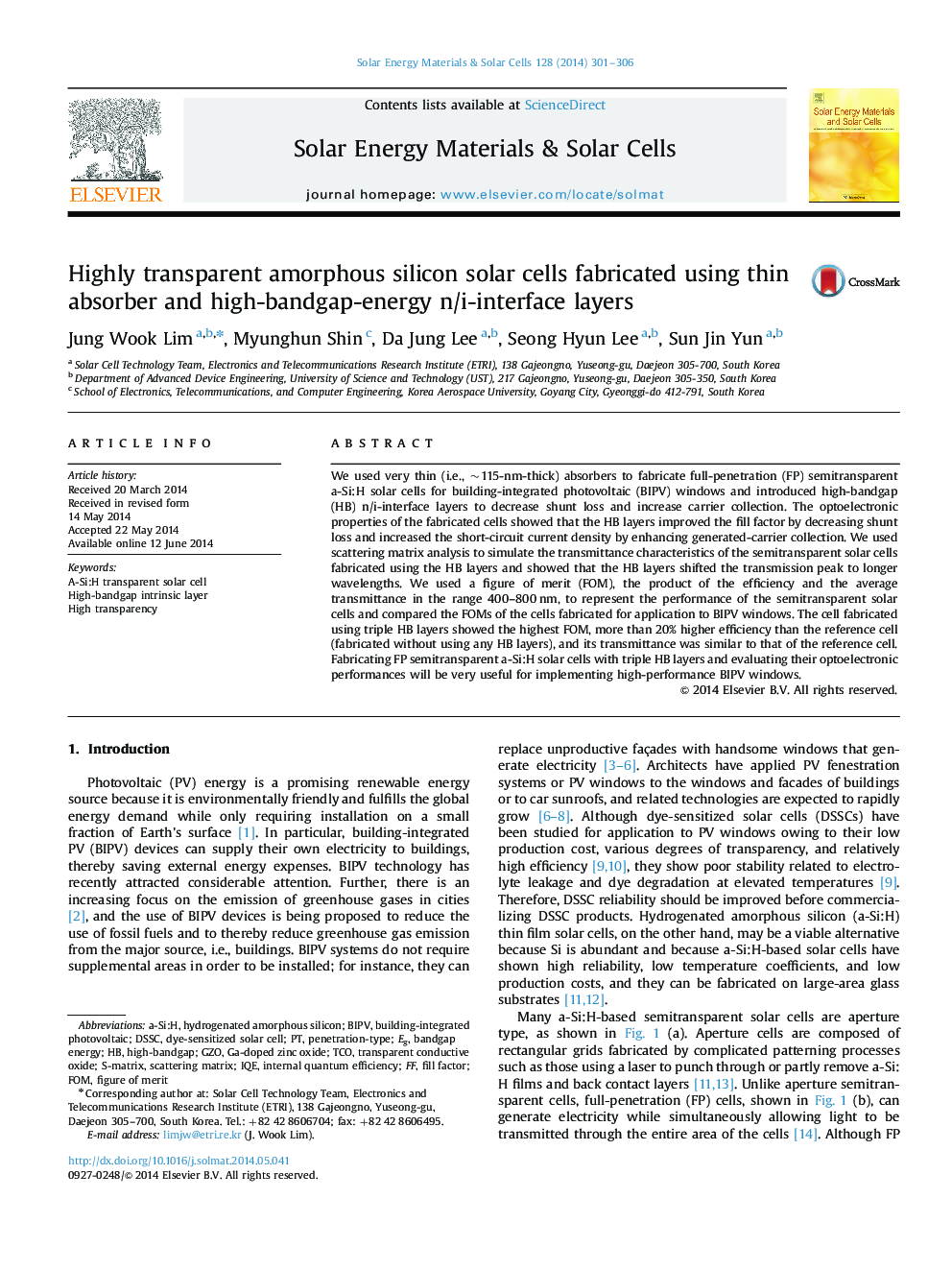| Article ID | Journal | Published Year | Pages | File Type |
|---|---|---|---|---|
| 78002 | Solar Energy Materials and Solar Cells | 2014 | 6 Pages |
●Semitransparent a-Si:H solar cells with 115-nm-thick absorber were fabricated.●High-bandgap (HB) layers were employed at n/i interface to improve the performance.●HB layers increased short-circuit current and fill factor.●Optical simulation predicted the shift of transmission peaks with HB layers.●Triple HB layers were most effective for highly transparent and efficient cells.
We used very thin (i.e., ~115-nm-thick) absorbers to fabricate full-penetration (FP) semitransparent a-Si:H solar cells for building-integrated photovoltaic (BIPV) windows and introduced high-bandgap (HB) n/i-interface layers to decrease shunt loss and increase carrier collection. The optoelectronic properties of the fabricated cells showed that the HB layers improved the fill factor by decreasing shunt loss and increased the short-circuit current density by enhancing generated-carrier collection. We used scattering matrix analysis to simulate the transmittance characteristics of the semitransparent solar cells fabricated using the HB layers and showed that the HB layers shifted the transmission peak to longer wavelengths. We used a figure of merit (FOM), the product of the efficiency and the average transmittance in the range 400–800 nm, to represent the performance of the semitransparent solar cells and compared the FOMs of the cells fabricated for application to BIPV windows. The cell fabricated using triple HB layers showed the highest FOM, more than 20% higher efficiency than the reference cell (fabricated without using any HB layers), and its transmittance was similar to that of the reference cell. Fabricating FP semitransparent a-Si:H solar cells with triple HB layers and evaluating their optoelectronic performances will be very useful for implementing high-performance BIPV windows.
